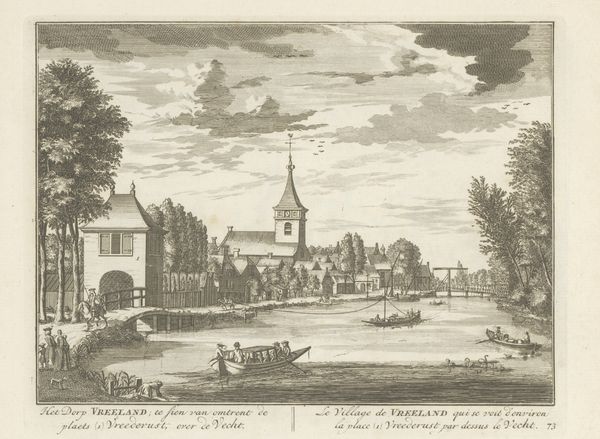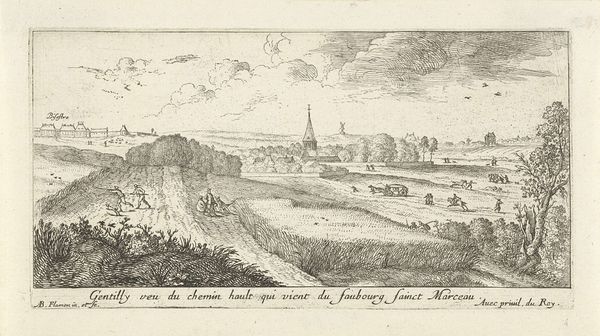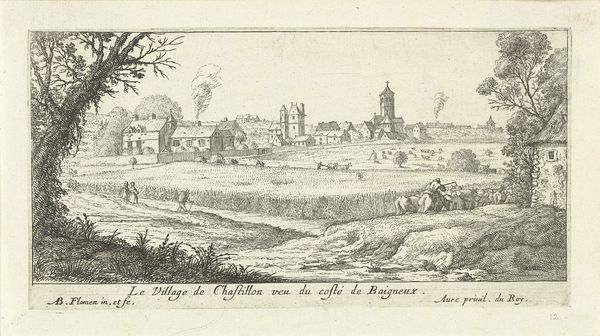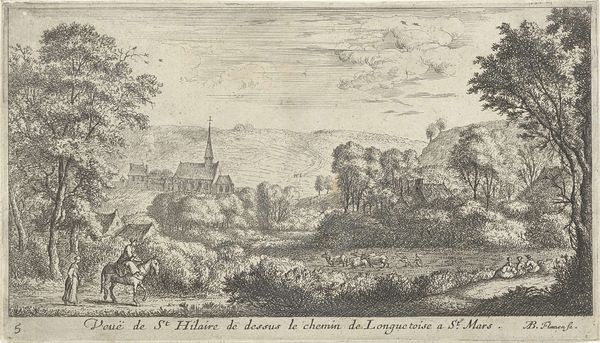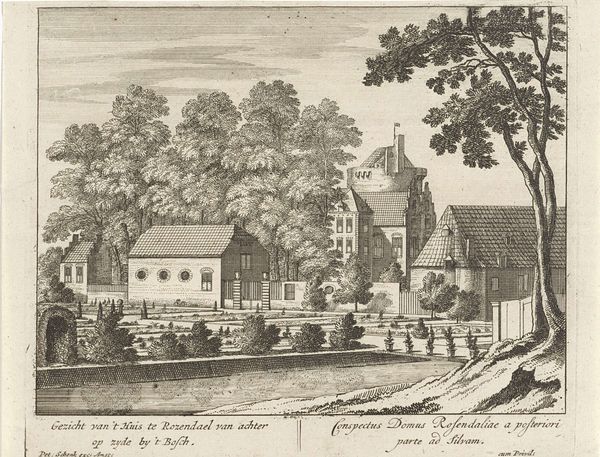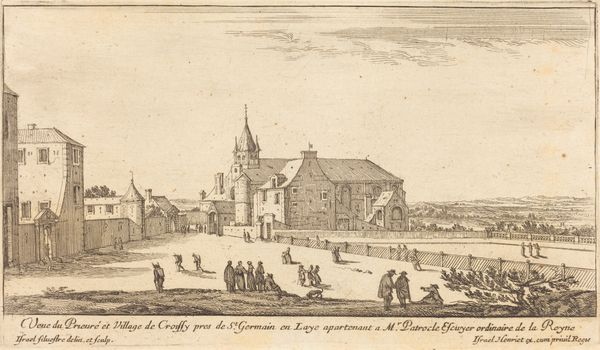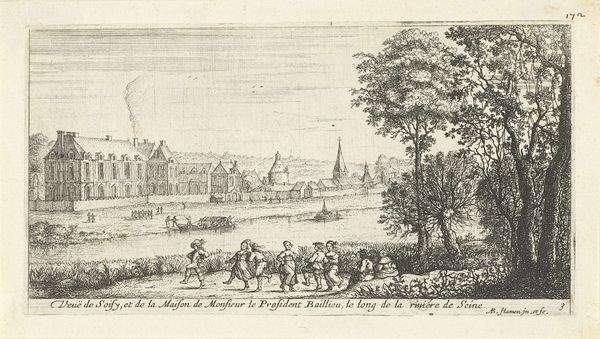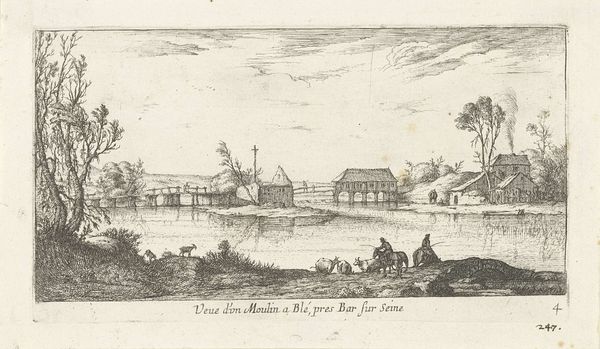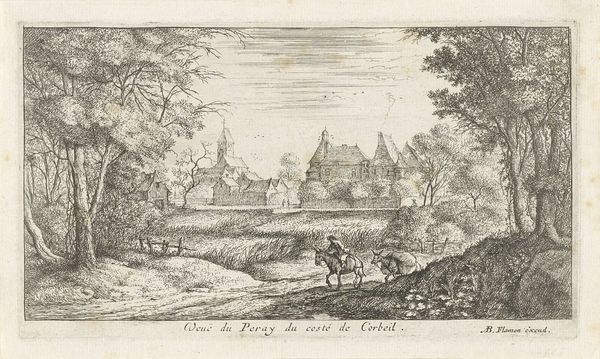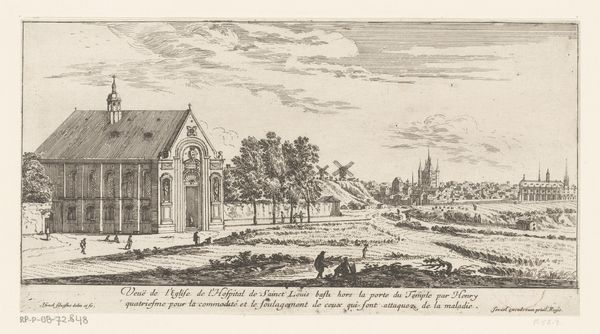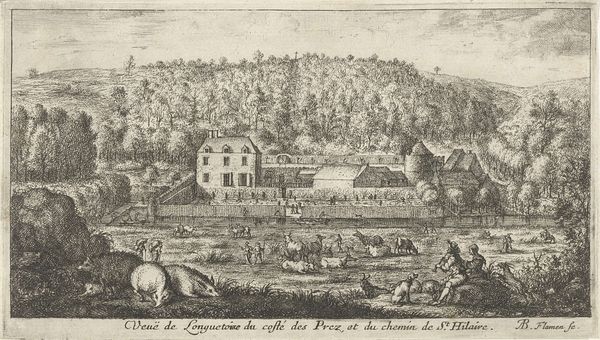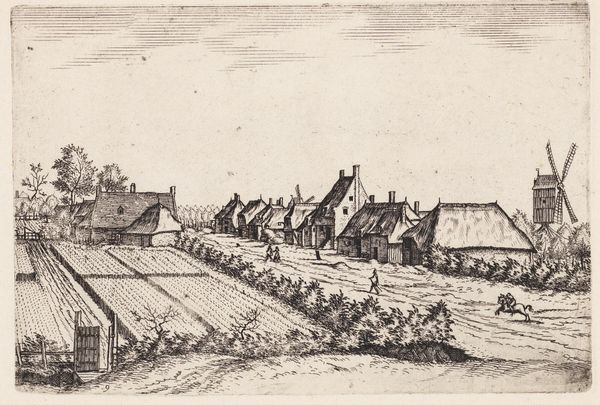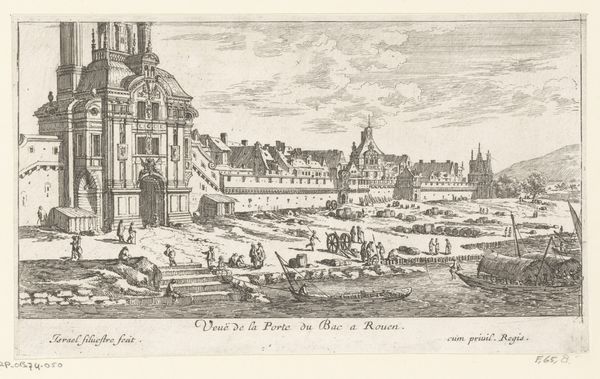
drawing, print, ink, engraving
#
drawing
#
baroque
# print
#
landscape
#
ink
#
cityscape
#
engraving
Dimensions: height 89 mm, width 174 mm
Copyright: Rijks Museum: Open Domain
Albert Flamen made this etching, Watermolen bij Essonne, sometime in the 17th century. With its stark lines and intricate detail, the printmaking process lends itself well to depicting the industrial landscape of the watermill. The dense crosshatching creates areas of shadow, which gives depth to the buildings, vegetation, and figures populating the scene. Notice the textural contrast between the smooth paper and the rough, etched lines, almost mimicking the contrast between the mill's architecture and the surrounding natural environment. The etching process itself speaks to the burgeoning print industry of the time, enabling the mass production and dissemination of images. This connects the artwork to broader social issues of labor, politics, and consumption, inviting us to consider the amount of work involved in the production process, both in the making of the print and in the operation of the mill itself. Ultimately, understanding the materials, making, and context of this artwork allows us to appreciate its full meaning and significance.
Comments
No comments
Be the first to comment and join the conversation on the ultimate creative platform.
